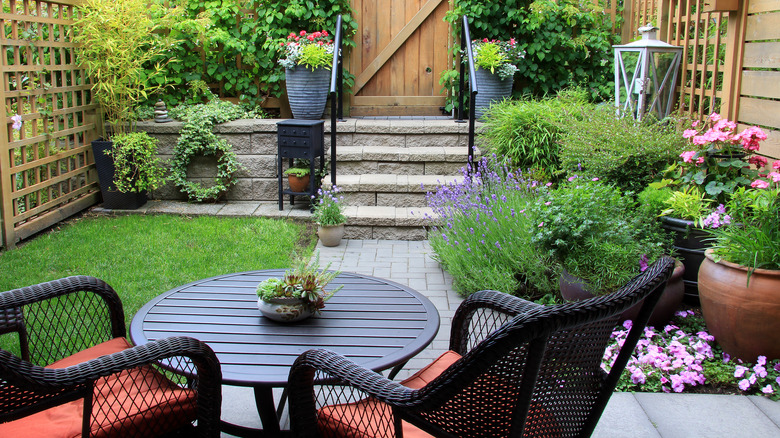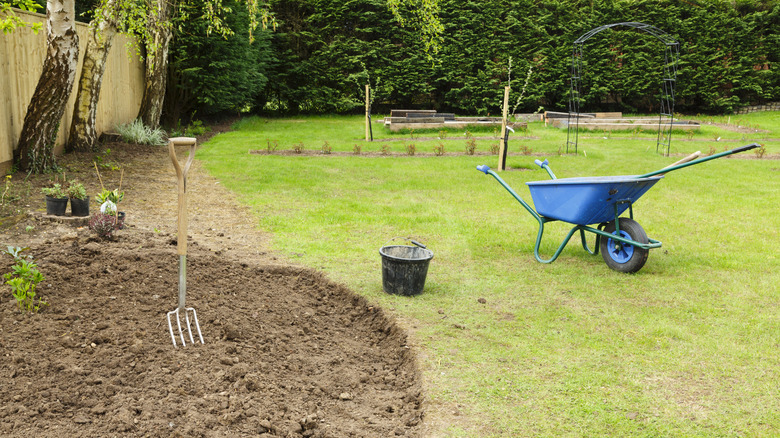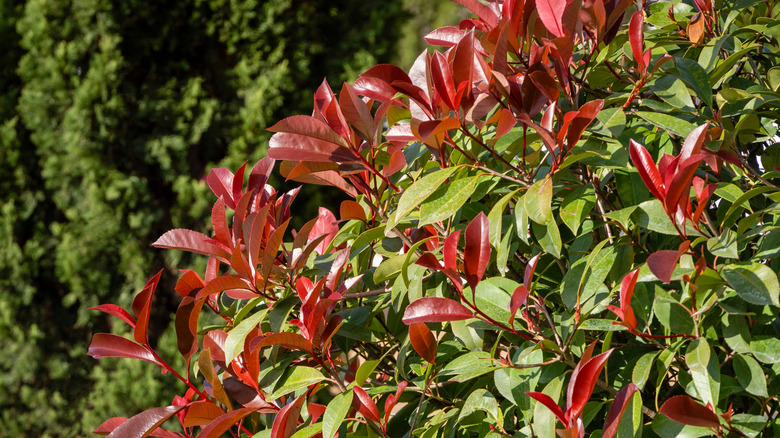The Fiery Red Tree That Fits Perfectly In A Small Garden (With An Extra Benefit)
When you're limited to a small garden space, incorporating larger plant life such as trees can pose a rather difficult challenge. If you really love the idea of trees, however, there's no reason to abandon your creative vision for your garden. All it takes is the ability to understand which factors need to be considered when selecting trees to plant in your small garden and a bit of planning ahead. Pleached trees, such as the striking fiery photinia Red Robin, (also called the red-tip photinia hybrid) are popular choices for small spaces thanks to their compact nature and horizontal nature.
While considering the environmental requirements — like sun exposure and soil type — is important for any tree or plant you want to add to your garden, those with small gardens must consider all aspects of size. When you're working in a tight space, you need to become familiar with the height, width, and root spread that can be expected from a tree when it reaches maturity. If a combination of small size and eye-catching vibrancy is what you're looking for, photinia Red Robin'trees might be for you. As an added bonus, these trees can also be placed strategically to create a bit of extra privacy for your garden space.
How to incorporate photinia Red Robin trees into your garden
Every outdoor success story begins with planning the best layout for your garden. Before committing to adding one or more photinia Red Robin trees into your small space, you'll need to familiarize yourself with its mature size, root spread, and environmental requirements. These trees can be expected to reach 10 to 15 feet in height and 10 to 15 feet in width. Their roots grow at shallow depths, rarely reaching more than 3 feet below the soil. This could make them a low risk for interfering with structures like foundations or pipes.
As you plan your garden or garden addition, measure the areas where you would like to plant your new trees. If each spot provides 10 to 15 feet of space vertically and horizontally plus 3 feet of clear space down, you'll have enough space to plant and grow the trees. If your goal is to create a privacy screen or hedge, however, plant a row of Red Robin trees as little as 2 feet apart from one another. Next, make sure that there aren't any plants with deep or hearty root systems too close, since they might take resources from the shallow-rooted Red Robin. Lastly, make sure your trees will get at least partial sun exposure and well-draining soil, as you don't want to deal with root rot thanks to waterlogged soil. Mark the spot for each tree with stakes or tape, if you aren't planting immediately.
How to plant and care for your photinia Red Robin trees
Once you've plotted out the locations of your new trees, it's time to plant. The best time to plant Red Robin trees is any time between autumn and spring, as long as the ground isn't frozen. Start by digging a hole as deep as the roots of your sapling or tree and three times in diameter. If your garden soil is clay soil, mix in some compost. Place the tree into the hole and replace the soil, gently pressing a thin layer over the top of the roots. Then, add a thick layer of mulch on top. Water the new trees generously after planting and continue to water them regularly for the first two years of growth. After this point, an average amount of rainfall should be enough to keep the trees healthy.
Heavy pruning isn't required, but feel free to trim your Red Robin trees into whichever shape or size suits your needs throughout the spring and summer, which is especially important if you're going for the added benefit of using the trees as a privacy hedge. Pause pruning after late summer, however, to allow the trees to prepare for colder temperatures. You may add a stake at any time if a tree begins to appear unstable. If you live in an especially cold climate, provide some shelter for the trees during winter. Otherwise, the photinia Red Robin is an ideal low-maintenance, tree perfect for a small garden.


